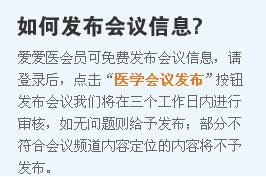旧金山(EGMN)—— **大学儿科肺病专家Margaret Rosenfeld博士在美国胸科学会(ATS)国际会议上报告了一项随机试验结果:囊性纤维化患儿吸入高渗盐水未能减少肺加重的次数。
在这项试验中,158例患儿雾化吸入7%高渗盐水,另163例患儿雾化吸入0.9%等渗盐水作为对照,均每日吸入2次,治疗48周。两组患儿均事先接受沙丁胺醇或左旋沙丁胺醇治疗。患儿年龄介于4~60个月。根据归还的药瓶数量判断,两组患儿对治疗的依从率均≥75%。
结果显示,高渗盐水组的平均肺加重率为2.3次事件/人·年(95%置信区间[CI],2.0~2.5),抗生素治疗肺加重的平均总天数为60天(95%CI,49~70)。而对照组的平均肺加重率为2.3次事件/人·年(95%CI,2.1~2.6),抗生素治疗平均总天数为52天(95%CI,43~61)。
次要终点(包括身高、体重、呼吸频率、血氧饱和度、咳嗽或呼吸道症状评分)方面无显著组间差异。两组的不良事件情况相似,咳嗽是最常见的不良事件,两组发生率均为40%左右(JAMA 2012 May 20 [doi:10.1001/jama.2012.5214])。
“人们非常希望找到针对囊肿性纤维化的早期干预策略,以便在支气管扩张变为不可逆性之前延缓或预防肺病。根据现有证据,高渗盐水并不具备这种作用。因此我们不建议对这个年龄段的患儿使用高渗盐水。”
这一发现令人意外,因为众所周知高渗盐水对年龄较大的儿童和成人具有预防肺加重的作用,这可能与其有助于咳出病菌有关。人们期望它对低幼患儿也有益,并且近年来已经越来越多地将其用于这一人群(N. Engl. J. Med. 2006;354:229-40)。 “至于为何高渗盐水对低幼患儿无效,我们有多种猜测,首先是婴儿和幼儿的肺加重可能有着特殊机制,或许大多是由病毒性呼吸道感染诱发,而高渗盐水不能预防呼吸道病毒感染。
凯斯西储大学的Elliott Dasenbrook博士和Michael Konstan博士在随刊述评中指出,肺加重可能太不敏感而不宜作为主要结局指标。年龄较大患者因完全性肺损伤而容易出现肺加重,而低幼患儿尚未发生完全性肺损伤。也许在临床试验中需要采用早期疾病发生的更微妙标志物。
”虽然这项研究提示吸入高渗盐水不应作为幼儿的常规治疗,但要做出最终判决还为时尚早,抛弃这一治疗选择也很可惜。或许更敏感的、针对幼儿的终点指标能发现这一干预的益处。“
Rosenfeld博士指出,这项试验中有一个”诱人的“发现,即高渗盐水可能延缓结构损伤。高渗盐水组有22例年龄4~16个月的患儿接受了肺功能检查,其0.5秒用力呼气量(FEV0.5)比23例对照组患儿平均多出38 ml(95%CI,1~76),这也是两组在肺功能方面的唯一显著性差异。述评作者认为,这也许会成为未来试验中的一项标志物,不过”统计学显著性差异并不一定有临床意义,即使婴儿肺功能检查的结果令人鼓舞,这种探索性终点仍应被视为一种假设,需要进一步研究这些差异的临床意义“ 。
Rosenfeld博士承认担任基因泰克和Vertex制药的顾问,并接受了由Vertex提供的研究资金。Dasenbrook博士是Savara和Gilead的顾问。Konstan博士披露称担任Aradigm、勃林格-殷格翰、基因泰克、诺华、PARI呼吸设备、Vertex等公司的顾问,接受了或可能将接受数家公司的资助,并从基因泰克和诺华获得演讲费。
BY M. ALEXANDER OTTO
Elsevier Global Medical News
Breaking News
SAN FRANCISCO (EGMN) – Inhaled hypertonic saline did not reduce the number of pulmonary exacerbations in infants and children with cystic fibrosis in a randomized trial.
The trial pitted 7% hypertonic saline in 158 pediatric patients against 0.9% isotonic saline as a control in 163 patients. The solutions were nebulized twice daily for 48 weeks, with both groups getting albuterol or levalbuterol beforehand. The patients ranged in age from 4 to 60 months. Adherence was at least 75% in each group, judging from returned study drug ampoules, reported lead investigator Dr. Margaret Rosenfeld at an international conference of the American Thoracic Society.
In the hypertonic saline group, the mean pulmonary exacerbation rate was 2.3 events/person-year (95% confidence interval [CI], 2.0-2.5), and the mean number of total antibiotic treatment days for pulmonary exacerbations was 60 (95% CI, 49-70)。 In the control group, the mean pulmonary exacerbation rate was 2.3 events/person-year (95% CI, 2.1-2.6), and the mean total number of antibiotic treatment days was 52 (95% CI, 43-61)。
No significant differences were seen in secondary end points, including height, weight, respiratory rate, oxygen saturation, cough, or respiratory symptom scores. Adverse event profiles were similar, with cough the most common adverse event in about 40% of each group (JAMA 2012 May 20 [doi:10.1001/jama.2012.5214])。
”There is great interest in the CF [cystic fibrosis] community about developing early intervention strategies to delay or prevent CF lung disease before the bronchiectasis becomes irreversible. From our current evidence, hypertonic saline does not fulfill that role. Based on its inability to reduce the rate of pulmonary exacerbations, we would not recommend that it be used in this age range,“ said Dr. Rosenfeld, a pediatric pulmonologist and associate professor of pediatrics at the University of Washington in Seattle.
The finding was a surprise because hypertonic saline is known to prevent exacerbations in older children and **s, perhaps by helping the lungs cough out bacteria. There has been hope it would also help very young children, and its use in that population has increased substantially in recent years, Dr. Rosenfeld noted (N. Engl. J. Med. 2006;354:229-40)。
”We've been scratching our heads about“ why that hope didn't pan out in the trial. ”We have a number of hypotheses. The first one is that pulmonary exacerbations may be really different beasts in infants and young children. [Perhaps] they are mostly triggered by viral respiratory infections. Hypertonic saline can't prevent people from getting respiratory viruses,“ she said at the conference.
Jury Still Out
Exacerbations might have been too blunt a primary outcome measure, according to an editorial that accompanied the published study in JAMA.
Very young children with CF have not yet developed the outright lung damage that makes older patients particularly susceptible to exacerbations. Perhaps more subtle markers of early disease onset and progression were needed in the trial, wrote Dr. Elliott Dasenbrook, associate director of the Adult Cystic Fibrosis Program at Case Western Reserve University, Cleveland, and Dr. Michael Konstan, director of the school's Cystic Fibrosis Center and chairman of its pediatrics department.
”Although the results of the study suggest that inhaled hypertonic saline should not be used routinely in young children, the final verdict on its use for infants and young children has not been rendered. It would be disheartening if a viable therapeutic option was discarded because of negative study results when more sensitive end points might have detected benefit from the intervention. Testing therapeutic agents in infants and young children may require different end points capable of assessing onset and progression of disease,“ they wrote (JAMA 2012 May 20 [doi: 10.1001/jama.2012.5853])。
There was one ”tantalizing“ hint in the trial that hypertonic saline may delay structural damage, Dr. Rosenfeld said. Among the 22 children aged 4-16 months in the hypertonic saline group who had pulmonary function tests, forced expiratory volume in 0.5 seconds (FEV0.5) was a mean of 38 mL greater (95% CI, 1-76) than among the 23 children tested in the control group, the only significant pulmonary function difference.
Perhaps that could be a marker in future trials, but ”statistically significant difference does not necessarily imply clinical significance,“ Dr. Dasenbrook and Dr. Konstan noted. ”Even though the results of infant pulmonary function testing appear encouraging, … these exploratory end points should be viewed as hypothesis generating, and research exploring the clinical effects of these differences is needed.“
That research is likely to happen. ”We would like to study [hypertonic saline] further and see if we get a signal if we choose more physiologic end points,“ Dr. Rosenfeld said.
Dr. Rosenfeld disclosed that she is an adviser to Genentech and Vertex Pharmaceuticals, and receives research grants from Vertex. Dr. Dasenbrook is a consultant for Savara and Gilead. Dr. Konstan is an adviser to Aradigm and a consultant for Boehringer Ingelheim, Genentech, Novartis, PARI Respiratory Equipment, Vertex, and several other companies. He receives grants or has grants pending from several companies, and receives speaker's fees from Genentech and Novartis.

